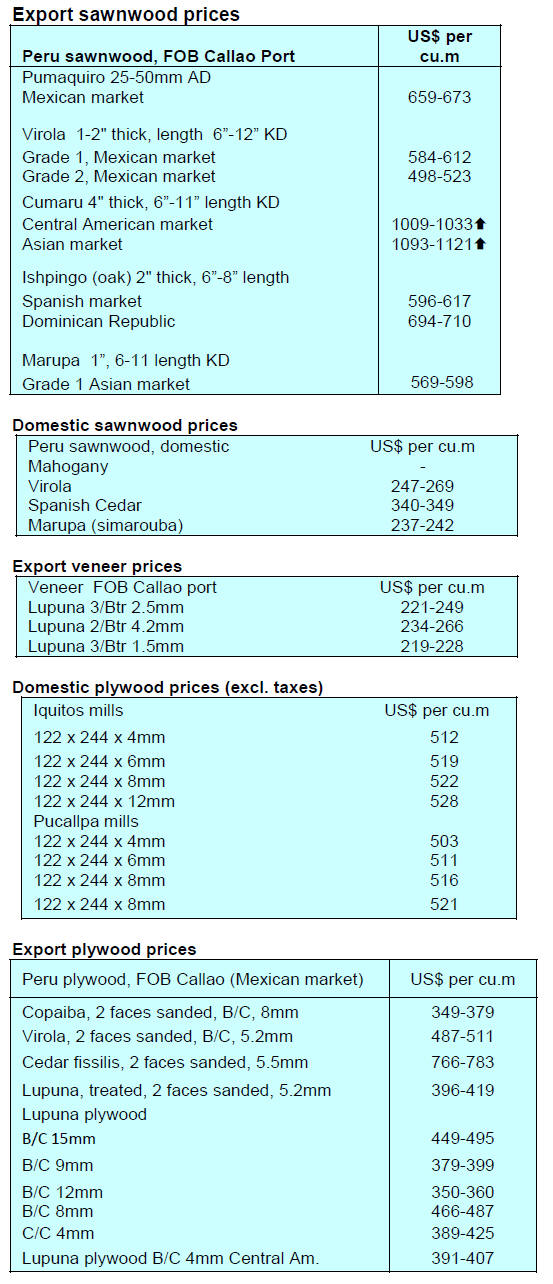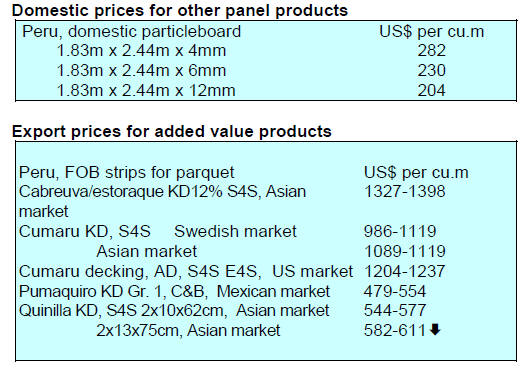
4.
INDONESIA
Indonesian furniture exports to
Canada
Statistics Canada reported 2020 imports of Indonesian
furniture increased by 21% compared to the previous year.
In the first quarter of 2021 furniture exports to Canada
increased by almost 50% compared to the same period in
2020.
Recently, the Indonesian Consul General in
Toronto, Leonard F. Hutabarat, held a virtual meeting
with Sinthusan Sivagnanam, CEO of Avanica Inc., a
Canadian company that has a wooden furniture factory in
Jepara, Central Java. The meeting was to discuss latest
developments in the export of Indonesian wooden
furniture to Canada as despite the huge potential,
Indonesia's furniture exports are still faced with a number
of challenges including the scarcity and high cost of
shipping containers.
See:
https://kemlu.go.id/portal/en/read/2580/berita/export-ofindonesian-furniture-products-to-canada-by-avanicaincorporation#
Digital services for Indonesian exporters
The Deputy Minister of Foreign Affairs, Mahendra
Siregar, expressed optimism that Indonesia companies are
on track to revive exports especially to Europe where there
is good demand for Indonesian products such as seafood,
rattan, wood products and furniture.
The Ministry of Foreign Affairs facilitates virtual business
matching between Indonesian entrepreneurs and importers
and distributors in Europe, the latest of which involved 35
Indonesian companies with business partners from
Western and Southern Europe.
Mahendra said the Ministry will continue to arrange
business meetings as they provide benefits for
entrepreneurs including Indonesian and European
MSMEs.
See:
https://www.neraca.co.id/article/147921/kemenlu-berikanlayanan-digital-bagi-eksportir-indonesia-perluas-pasar-ke-eropabarat-dan-selatan
Social forestry delivers higher incomes for
communities
The Director General of Social Forestry and
Environmental Partnership (PSKL) in the Ministry of
Environment and Forestry (KLHK), Bambang Supriyanto,
said that social forestry is having an impact on the
finances of communities living around forests.
He pointed out that the social forest programme has
generated job opportunities for over 1 million families.
According to KLHK data, as of May 2021 the social
forestry programme extended over 4.7 million hectares
distributed throughout Indonesia.
Up to June 2021 an additional 276,550 ha. have been
assigned to the programme. Bambang reported that, based
on a survey on the impact of social forestry on 103 social
forest business groups in 2020, 46% felt that their family
income had doubled and 26% said that their family income
increased 2-3 times with another 26% said the increase
was less than double.
See:
https://www.antaranews.com/berita/2216202/klhkperhutanan-sosial-berikan-dampak-nyata-untuk-masyarakat
Online sales platform for forest products
Perum Perhutani, a State-Owned Enterprise which has the
duty and authority to carry out the planning, management,
exploitation and protection of forests in its working area
has developed a platform in order to support marketing via
mobile apps. Perum Perhutani Commercial Director,
Ahmad Ibrahim, said this application will be boosted to
facilitate trade in Perhutani products making it easier for
consumers to shop.
Perhutani provides the guarantees on the quality, the origin
and the legality of the wood products it markets. Ibrahim
said Perhutani implements Sustainability Forest
Management and holds 49 FSC Controlled Wood
certificates and eight FSC FM-CoC certificates.
See:
https://www.liputan6.com/bisnis/read/4443577/perhutanikembangkan-platform-penjualan-online-pertama-untuk-produkkehutanan
Steep drop in fire hotspots
The Environment and Forestry Ministry has satellite data
showing that between January to mid-June 2021 the
number of fire hotspots representing potential forest fires
dropped substantially compared to the same period last
year.
The satellite-based evidence is derived from Terra/Aqua
(LAPAN) data in hotspots with a confidence level of more
than 80% indicating that from1 January 15 June 2021,
268 hotspots were detected, a fall from the 745 hotspots in
the same period last year.
See:
https://foresthints.news/report-details-impressive-declinesin-hotspots/
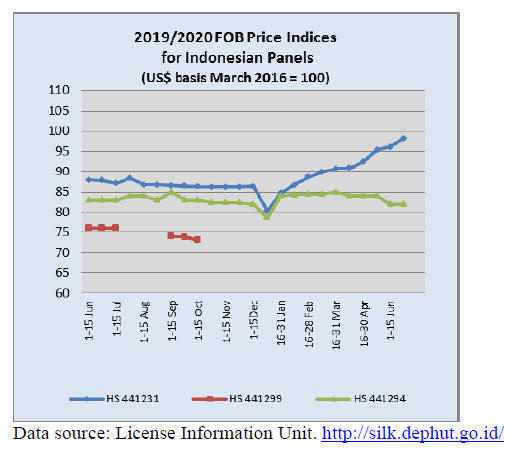
5.
MYANMAR
Rising Covid-19 infections
Residents in Maungdaw, a border town close to
Bangladesh in Rakhine State, are concerned about a new
virus outbreak in the town after three people who had
received two vaccinations tested positive.
Despite increased COVID-19 cases, including among
people who have not traveled, there is currently still no
plan to close Rakhine’s schools, said the head of the state
education office, U Tin Thein. Basic education schools
opened on 1 June in Rakhine and more than 300,000 or
almost all pupils have attended schools in the state,
according to the office. Sagaing Region has seen the
largest number of infections followed by Yangon Region
and Chin State. Clusters of infections have also been
reported in Yangon and Bago regions.
According to the Ministry of Health, Myanmar has
recorded 152,356 COVID-19 cases with 3,290 deaths
nationwide. In the border area with India the fatality rate is
reported as rising.
See:
https://www.irrawaddy.com/news/burma/vaccinatedrakhine-residents-catch-covid-19-on-myanmar-bangladeshborder.html
Third round of EU sanctions over the military coup and
subsequent repression
On 21 June 2021 the Council of the European Union
issued a press release with details of the additional
sanctions imposed on individuals and entities in Myanmar.
See:
https://www.consilium.europa.eu/en/press/pressreleases/2021/06/21/myanmar-burma-third-round-of-eusanctions-over-the-military-coup-and-subsequent-repression/
The press release says “The Council today imposed
sanctions on 8 individuals, 3 economic entities and the
War Veterans Organisation in relation to the military coup
staged in Myanmar/Burma on 1 February 2021, and the
ensuing repression against peaceful demonstrators. The
EU's restrictive measures are largely aligned with those of
major international partners.
The individuals targeted by sanctions
include ministers and deputy ministers, as well as
the attorney general, who are responsible for undermining
democracy and the rule of law and for serious human
rights violations in the country. The four entities are
either state-owned or controlled by the Myanmar Armed
Forces (Tatmadaw), contributing directly or indirectly to
the military's revenues or activities.
By targeting the gems and timber sectors these measures
are aimed at restricting the junta’s ability to profit from
Myanmar’s natural resources, while being crafted so as to
avoid undue harm to the people of Myanmar.
Restrictive measures, which now apply to a total of 43
individuals and 6 entities, include an asset freeze and a
prohibition from making funds available to the listed
individuals and entities. Additionally, a travel ban
applicable to listed persons prevents them from entering or
transiting through EU territory.
Pre-existing EU restrictive measures also remain in place.
These comprise an embargo on arms and equipment that
can be used for internal repression, an export ban on dualuse
goods for use by the military and border guard
police, export restrictions on equipment for monitoring
communications that could be used for internal repression,
and a prohibition on military training for and military
cooperation with the Tatmadaw.
The restrictive measures come in addition to the
withholding of EU financial assistance directly going to
the government and the freezing of all EU assistance that
may be seen as legitimising the junta. The EU remains a
steadfast supporter of Myanmar/Burma’s people and of the
country’s democratic transition.”
As a result of the latest EU sanctions which imposed
restrictive measures on the Myanma Timber Enterprise,
the Forest Joint Venture Corporation and the Minister of
MONREC, timber exporters have been advised to await an
evaluation of the impact of the new measures.
Recently the authorities resumed issuing export licenses
for sawnwood. The licenses had been suspended by
the State Administration Council (official name of military
government) from the beginning of April this year.
The private sector understands that exports of sawnwood
will be permitted until 31 December 2022 after which only
exports of semi-finished and finished products will be
allowed.
Although the latest EU sanctions do not refer to a ban on
EU imports of wood products from Myanmar exporters in
Myanmar and EU importers wish to seek clarification on
this issue before resuming shipments of wood products
including sawnwood.
It has been learned that a Wood-based Industries
Development Committee was formed last month with the
Deputy Minister as Chair and the Managing Director of
the Myanma Timber Enterprise as Secretary along with
private sector representatives. It is understood that the
natural forest log export ban will remain in place.
6. INDIA
House price index
continues up
The Reserve Bank of India released its quarterly Housing
Price Index (HPI) for the period January-March 2020-21
based on transaction-level data received from housing
registration authorities in ten major cities. The HPI
increased 2.7% year-on-year in the March quarter 2020-21
compared to 3.9% growth a year ago. The cities covered
are: Ahmedabad, Bengaluru, Chennai, Delhi, Jaipur,
Kanpur, Kochi, Kolkata, Lucknow and Mumbai.
The HPI growth showed large variation across major
cities, from an increase of 15.7% in Bengaluru to a
contraction of 3.6% in Jaipur.
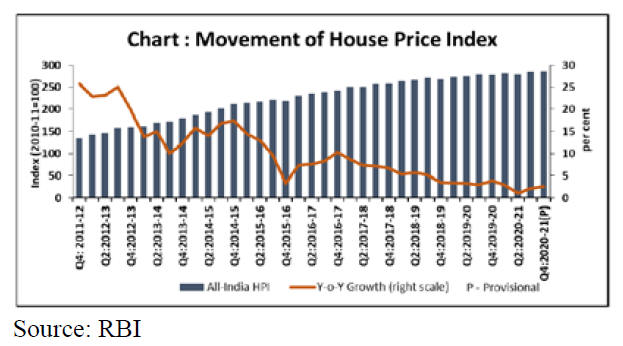
See:
https://rbi.org.in/Scripts/BS_PressReleaseDisplay.aspx?prid=51771
Wood product price indices rise
The Ministry of Commerce and Industry has reported the
official Wholesale Price Index (WPI) for ‘All
Commodities’ (Base: 2011-12=100) for May increased to
132.7 from 129.3 in April 2021.
The annual rate of inflation, based on the monthly WPI,
was, year on year, 12.94% in May, 2021. The high rate of
inflation in May was primarily due to effect of a low base,
the rise oil and mineral prices and a rise manufactured
product prices.
The index for manufactured products, which accounts for
64% of the index, increased. Out of the 22 groups of
manufactured products making up the index 17 increased
in May. The 4 groups for which prices declines were
reported included non- metallic mineral products; wood
and of products of wood and cork; textiles; tobacco
products. For one group there was no change.
The press release from the Ministry of Commerce and Industry
can be found at:
http://eaindustry.nic.in/cmonthly.pdf

Industrial production and exports recovering
India's exports rose by over 4% to US$14.06 billion in the
first two weeks of June driven higher by shipments from
the engineering, gems and jewellery and petroleum
product sectors. Imports also rose nearly doubling to
US$19.59 billion during the same period.
Industry leaders in India anticipate an improvement in
domestic demand this year despite the economic setback
due to the COVID-19 pandemic as there are some signs of
a revival of economic activities as restrictions are rolled
back.
The industry has also been encouraged by a recent report
from the Reserve Bank of India in which the bank says
industrial production and exports have surged recently and
despite the second wave, goods and services tax (GST)
collection in 2021-22 so far has been better than in 2020-
21.
See:
https://www.outlookindia.com/newsscroll/industry-leadersexpect-major-uplift-in-market-sentiment-in-202122-despitepandemic-bottlenecks/2106978
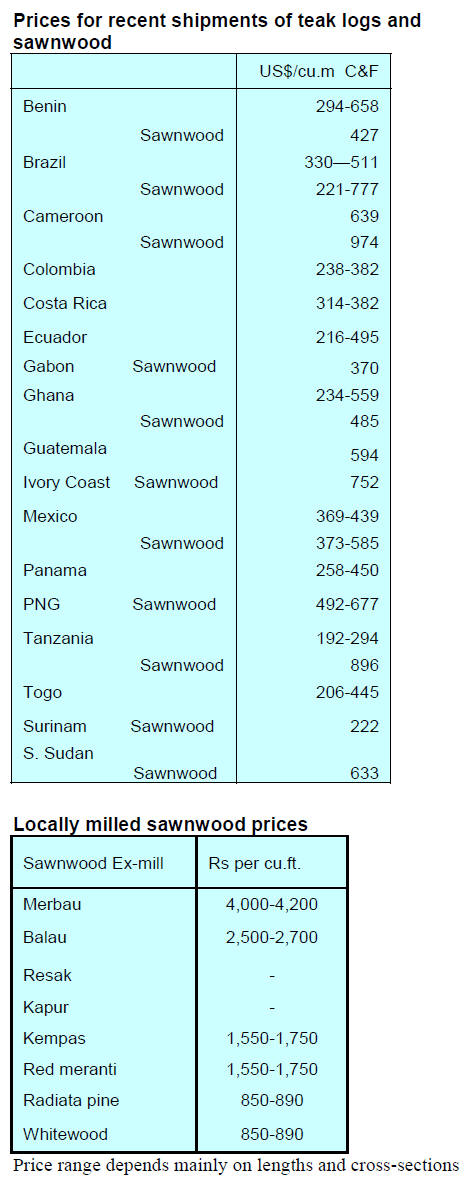
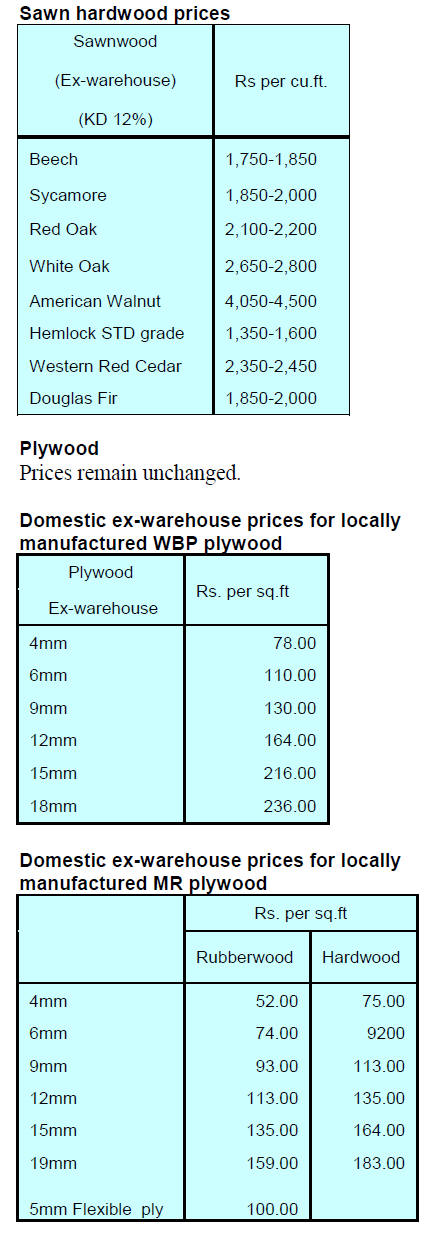
7.
VIETNAM
Vietnam’s imports of wood from Europe soaring
In the first 10 days of June 2021 Vietnam’s imports of
wood products from all sources reached US$62.9 million.
According to the Center for Industry and Trade
Information (Ministry of Industry and Trade) the recently
concluded EU-Vietnam Free Trade Agreement (EVFTA)
has given a boost to the trade in wood and wood products
(W&WP) between Vietnam and EU.
The high quality, verifiable origin and zero export/import
tax on wood products imported from EU play an
increasingly important role providing raw materials for
Vietnamese enterprises.
In the first 5 months of 2021 Vietnam imported 177,590
cu.m of logs from the EU, up 21% over the same period
of 2020. Of the total volume of imported logs ash
accounted for 84% (148,850 cu.m), up 9.5% over the
same period of 2020. Imports of poplar increased sharply.
Imports of sawnwood from the EU also increased
reaching over 130,000 cu.m, up 76% over the same
period in 2020. Pine remains the most important species
imported at 49,260 cu.m.
Of the EU suppliers, imports from Belgium increased by
21%, France by 45%, Germany by 18% and Finland by
63%.
Vietnamese enterprises say imports of wood raw material
from the EU have risen because they have full order
books exports through to year end.
See: Nhập khẩu gỗ nguyên liệu từ Châu Âu tăng mạnh(msn.com)
Rising exports Canada
According to data from the General Department of
Customs, Vietnam's W&WP exports to Canada in May
2021 reached US$20.8 million, up 138% compared to
May 2020. In the first 5 months of 2021 W&WP export to
Canada amounted to US$104.3 million, up 69% over the
same period in 2020.
Wooden furniture is Vietnam's main export to Canada. In
the first 4 months of 2021 exports of wooden furniture
accounted for 89% of the total exports of W&WP to
Canada.
In Canada, as the impact of the pandemic receded, the
housing market heated up and there are no signs of it
cooling. This is the main reason behind the surge in
wooden furniture demand in recent months. According to
data from the Statistics Agency of Canada, imports of
wooden furniture into Canada in the first 4 months of 2021
reached US$847.84 million, up 46% over the same period
in 2020.
In particular, Canada increased imports from China and
Vietnam. Imports from China reached US$326 million, up
74% and that from Vietnam reached US$152 million, an
increase of around 63% over the same period in 2020.
The rapid growth of W&WP exports from China and
Vietnam into the Canadian market presents a challenge.
From 5 May 2021 the Canadian Border Services Agency
(CBSA) decided to apply anti-dumping and anti-subsidy
duties on upholstered seats from China and Vietnam.
For Vietnam, in addition to the 7 foreign enterprises that
are subject to anti-dumping and anti-subsidy duties of
between 17.44% - 89.77%, all other exporters are subject
t o tax rate of 101.5%.
Export of office furniture rising
In May 2021 Vietnam's office furniture exports reached
US$46 million, up 96% compared to May 2020. In the
first 5 months of 2021 exports of office furniture reached
US$216 million, up 73% over the same period in 2020.
According to data from the General Department of
Customs of Vietnam exports of office furniture in April
2021 reached US$45.8 million, up 132% compared to
April 2020. In the first 4 months of 2021 office furniture
exports reached US$169.8 million, up 67% over the same
period in 2020.
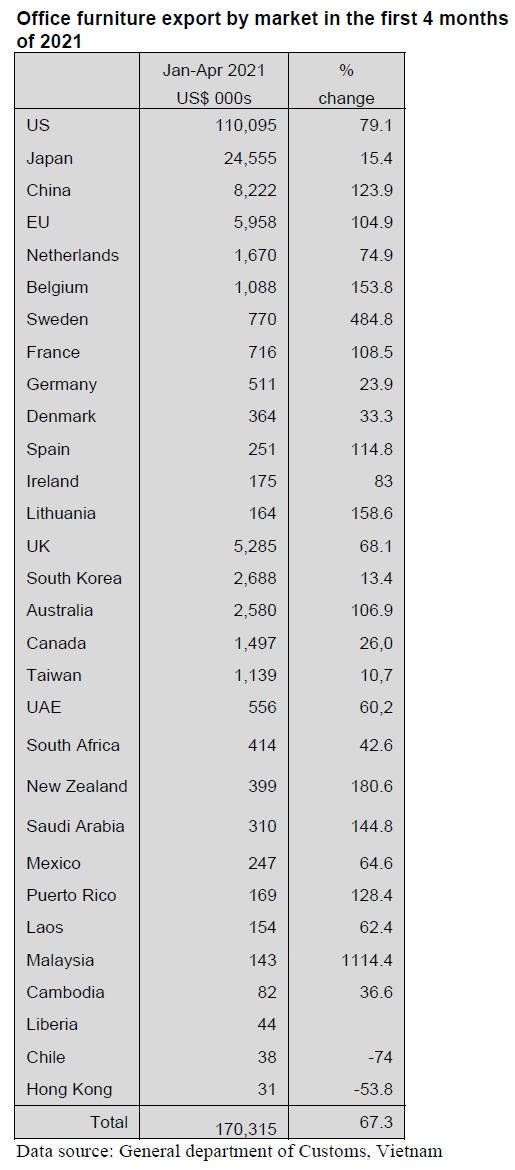
From the end of April because of a resurgence of
corona
infections Vietnam’s economy slowed as enterprises cut
production and exports. Office furniture exports, however,
were the exception. The international demand for wooden
office furniture remains strong.
The US topped the list of office furniture imports from
Vietnam in the first 4 months of 2021 reaching US$110
million, up 79% over the same period in 2020.
Exports of office furniture to China, EU, Australia, New
Zealand, Saudi Arabia, Puerto Rico and Malaysia also
maintained high growth in the first 4 months of 2021.
Overseas investments
The government’s Foreign Investment Agency
has reported Vietnamese firms invested over US$540
million overseas in the first half of 2021, an almost three
fold rise year on year. Of the total some US$400 million
was top-up investments to existing projects.
Among the 12 fields of investment Vietnamese firms
channeled US$270 million into science-technology
projects and this accounted for 50% of all first half
investments. Wholesale and retail project attracted almost
US$150 million.
The US was the top destination for Vietnamese capital,
Cambodia ranked second followed by Canada and France.
See:
https://en.vietnamplus.vn/vietnamese-firms-overseasinvestment-rises-nearly-25fold-in-h1/203671.vnp
8. BRAZIL
Interest rate hike as inflation grows
Inflation measured by the Extended National Consumer
Price Index (IPCA) was 0.83% the highest for a May since
1996. The Central Bank raised its benchmark interest rate
by 75 basis points in May as it continues to wind down its
stimulus measures in the face of rising inflation which was
over 8% over the past 12 months.
The Bank's monetary policy committee said in a statement
it expected "another adjustment of the same magnitude or
more at its next meeting in August”.
Inflation has emerged as a central concern for policymakers
in Brazil as the economy begins to show signs of
recovery. Data for the first three months of this year
showed that GDP grew 1.2% from the previous quarter
bringing the size of the economy back to where it was
before the pandemic.
Investment in rail network to raise demand for sleepers
After months of economic decline due to pandemic 2021
prospects are improving and looking good for the
country's infrastructure and services sectors.
According to the Ministry of Infrastructure, Land and
Transport Secretariat in the coming years there will be an
expansion and renovation of the Brazilian railway network
and this will raise demand for wooden sleepers. The
Ministry’s goal is to attract more than R$40 billion in
private investments in the Brazilian railway system.
An example of where investment is required is the
construction of “Ferrogrão” (Iron-grain) railway, a project
that will run 933 kilometers between Sinop (Mato Grosso
State) and Miritituba (Pará state). This will be one of the
largest initiatives in the rail network construction.
According to projections by the Brazilian Chamber of
Construction Industry (CBIC) spending in the civil
construction sector could increase by around 4% in 2021
after falling 2.8% in 2020.
More support for small businesses
On 4 June 2021 a law (No.14.16) on the National
Programme to Support Micro and Small Businesses
(PRONAMPE) was enacted by the federal government.
This law enables the government to extend more
assistance to small and medium-sized companies affected
by the pandemic. The scheme will provide low-interest
loans, subsidised through the Operations Guarantee Fund
(Fundo Garantidor de Operações - FGO). PRONAMPE
will also create at least a R$5 billion credit line for micro
and small businesses.
This amount could rise to R$25 billion depending on the
participation of public and private banks.
In 2020 nearly half a million entrepreneurs benefited from
PRONAMPE including companies in the timber sector.
Micro-enterprises with annual sales of up to R$360,000
and small businesses with annual sales from R$360,000 to
R$4.8 million can access loans. Each loan is guaranteed by
the Federal government for up to 85%. The money can be
used for investments such as acquiring equipment or
carrying out renovations and for operating expenses such
as employee wages, paying business bills and purchasing
office supplies/goods.
Export update
In May 2021 Brazilian exports of wood-based products
(except pulp and paper) increased 76% in value compared
to May 2020, from US$235.5 million to US$414.8
million.
Pine sawnwood exports grew 54% in value between May
2020 (US$43.2 million) and May 2021 (US$66.5 million).
In volume, exports increased almost 20% over the same
period, from 250,400 cu.m to 300,200 cu.m.
Tropical sawnwood exports increased 17% in volume
from 35,200 cu.m in May 2020 to 41,200 cu.m in May
2021. In value terms exports rose 14.5% from US$14.5
million to US$ 16.6 million, over the same period.
Demand in international markets for plywood is strong
and Brazil’s pine plywood exports increase over 200% in
value in May 2021 in comparison with May 2020, from
US$39.9 million to US$125.3 million. In terms of volume
exports increased 59% over the same period from 155,800
cu.m to 247,000 cu.m.
There was also a surge in demad for tropical plywood and
the volume of exports increased 62.5% and in value by
100% from 4,000 cu.m (US$1.6 million) in May 2020 to
6,500 cu.m (US$3.2 million) in May 2021.
As for wooden furniture export earnings jumped from
US$31.8 million in May 2020 to US$69.7 million in May
2021 an almost 120% rise.
Timber exports soaring
Brazil exported 1.18 million tonnes of wood products
between January and mid-June 2021 which represents
86% of the total shipped in 2020. In the first two weeks of
June 2021 the country exported 173,000 tonnes compared
to only 40,000 tonnes in the same period in 2020.
Furniture exports increase
After two years of decline Brazilian furniture exports
registered strong growth in the first five months of 2021.
Between January and May export earnings reached
US$385.9 million, 69% above US$228 million reported in
the same period of 2020. Despite the overall increase
among the five main importing countries, imports by Chile
stand out as the country doubled imports of Brazilian
wooden furniture.
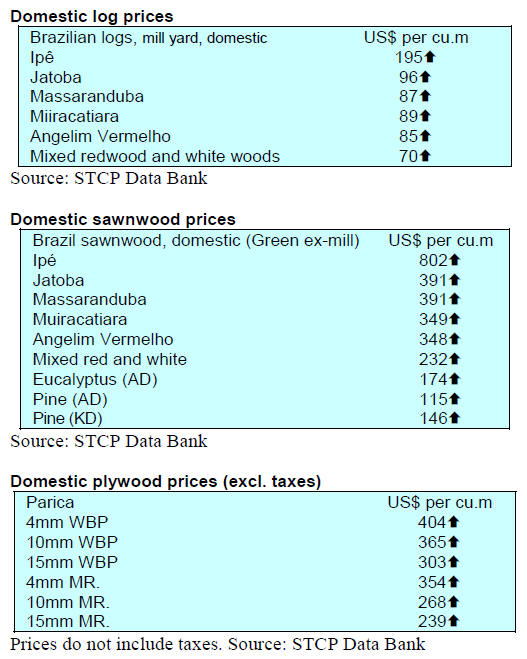
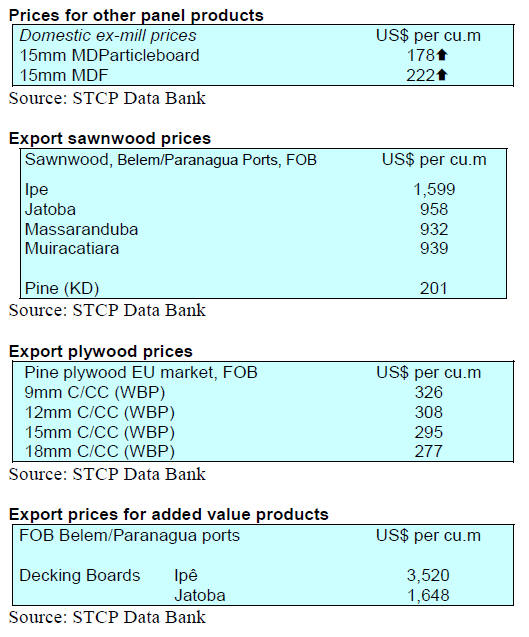
9. PERU
Opportunities in Malaysia for timber
exporters
Agustín Palacios, Minister Counselor and Charge
d'Affaires of the Peruvian Embassy in Malaysia said
during a virtual forum, Malaysia is a major timber
exporter but is currently promoting the manufacture of
value-added products and requires additional timber raw
materials to manufacture furniture, doors, frames and
flooring. He pointed out that Malaysia could diversify its
timber raw material base with Peruvian species.
In order to promote Peruvian timbers a representative of
the Ministry of Foreign Affairs suggested Peru would
benefit from participation in Malaysia trade fairs. It was
also suggested that companies in Peru should explore ecommerce
opportunities to reach out to Malaysian
companies.
Public-private cooperation the way forward for the
forestry sector
The president of the Wood and Wood Industries
Committee of the Association of Exporters (ADEX),
Enrique Toledo, highlighted efforts by the government, the
private sector and civil society in creating opportunities
for constructive dialogue. He pointed out that it is
important to generate trust and commercial actions that
contribute to the establishment of a credible and legal
trade in sustainably harvested products from Peruvian
forests.
Exports to rebound this year - Minister
Peru’s Minister for Foreign Trade and Tourism, Claudia
Cornejo, has said that Peru's exports are expected to
recover to pre-pandemic levels by December this year.
Between January and April this year exports rose around
30% year on year. Peruvian exports totalled US$46.4
billion in 2019 but fell almost 16% in 2020 according to
the Global Business and Economy Research Center of the
Association of Exporters (Adex).
The export recovery will be driven by trade in traditional
products (minerals) and non-traditional exports including
agricultural and forest products.
